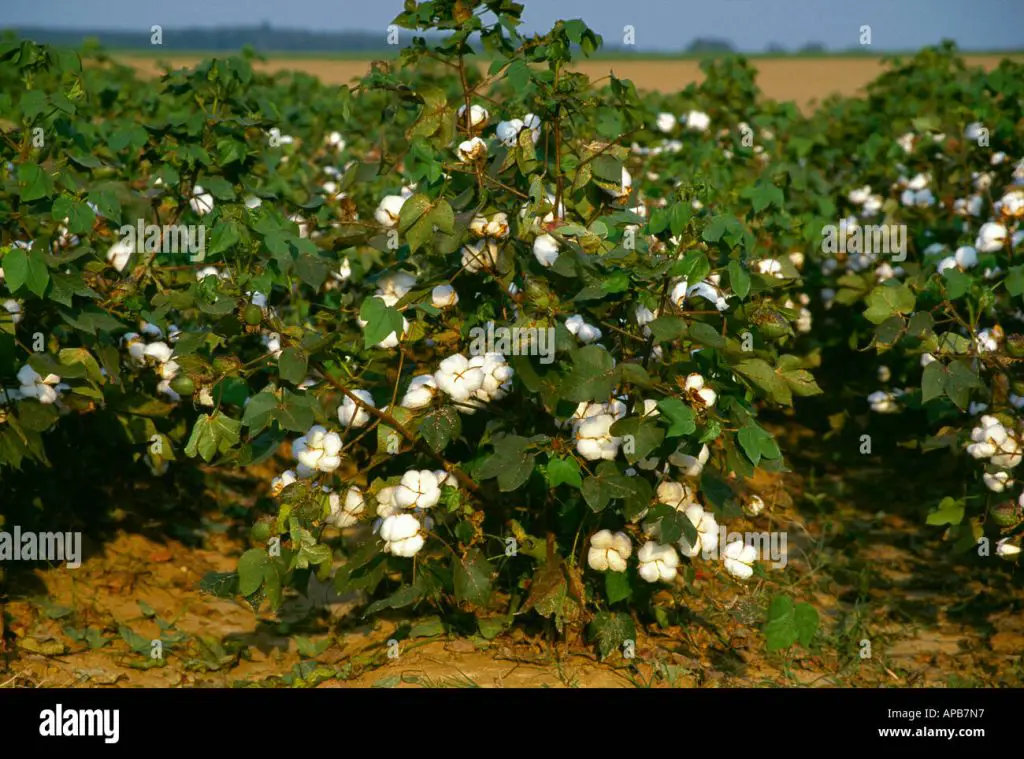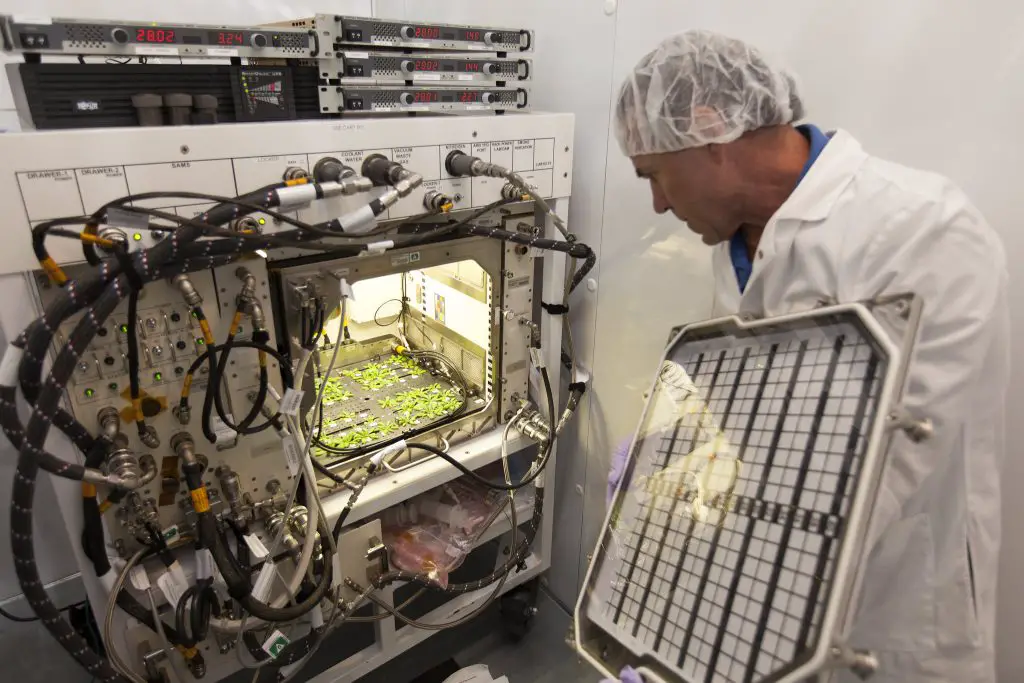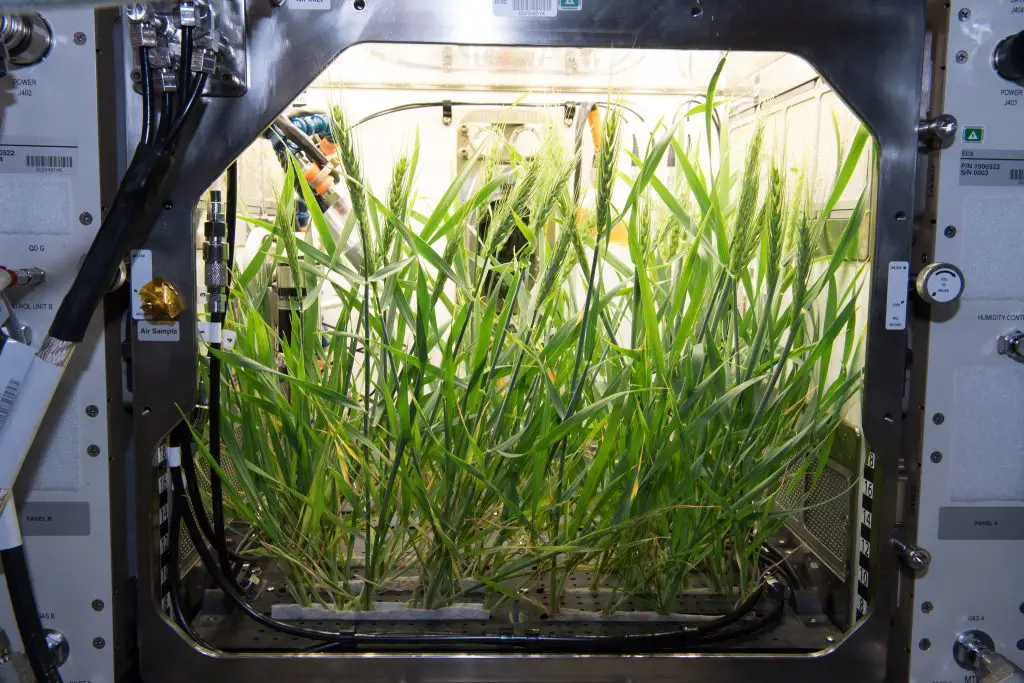A cotton plant reproduces by producing flowers that contain both male and female reproductive organs. These organs then allow the cotton plant to produce seeds through a process of pollination and fertilization.
Cotton, scientifically known as gossypium, is a plant that belongs to the botanical family malvaceae. It is widely cultivated for its soft and fluffy fibers, which are used to make a variety of textiles and products. But have you ever wondered how a cotton plant reproduces?
Well, the answer lies in its flowers. The flowers of a cotton plant are unique as they contain both male and female reproductive organs. The male parts, known as stamens, produce pollen, which is transferred to the female parts, known as the pistil, through pollination. This process allows the plant to produce seeds, which are the future generation of cotton plants. In this article, we will explore the fascinating process of cotton plant reproduction and how it contributes to the growth and sustainability of this valuable crop.

Credit: www.growveg.com
Life Cycle Of A Cotton Plant
The life cycle of a cotton plant encompasses various stages, each playing a crucial role in its growth and reproduction. Understanding the process can shed light on how these plants thrive and produce the cotton fibers we use in everyday products.
In this section, we will delve into the different stages of a cotton plant’s life cycle and explore how the reproductive phase fits into the overall process.
Overview Of The Different Stages In The Life Cycle Of A Cotton Plant
- Germination: The cotton plant’s life cycle begins when a seed germinates, triggered by favorable conditions such as warmth and moisture. The seedling emerges from the soil, and its roots penetrate deeper for stability.
- Vegetative growth: During this stage, the cotton plant focuses on building a strong foundation. It produces leaves, stems, and branches, utilizing sunlight and nutrients for growth.
- Flowering: As the cotton plant matures, it enters the crucial reproductive phase. It develops delicate and colorful flowers, attracting pollinators like bees and butterflies.
- Boll formation: After successful pollination, the cotton plant starts developing bolls, which are protective capsules that house the seeds and fibers. These bolls start off green and gradually transform into fluffy white balls of cotton.
- Ripening: The bolls mature over time, changing in color from green to yellowish-brown. This indicates that the cotton fibers inside the bolls have ripened and are ready for harvest.
Detailed Explanation Of How The Reproductive Phase Fits Into The Overall Life Cycle
The reproductive phase of a cotton plant, also known as flowering, is a crucial stage that ensures the future generation of cotton plants. Here’s how it fits into the overall life cycle:
- As the cotton plant matures and gains sufficient vegetative growth, it transitions into the reproductive phase to ensure survival and continuity.
- During this phase, the cotton plant produces vibrant flowers to attract pollinators. These flowers play a vital role in facilitating the transfer of pollen from the male reproductive organs (stamen) to the female reproductive organs (pistil).
- Pollinators like bees, butterflies, and other insects visit the flowers, collecting pollen from the anthers and depositing it onto the stigma of other flowers during their foraging activities.
- Successful pollination leads to the fertilization of the eggs present in the cotton plant’s pistil. Fertilization triggers the development of seeds within the bolls, which will give rise to future cotton plants.
- If pollination fails to occur, the flowers wither and fall off, resulting in a reduced yield of cotton fibers.
Therefore, the reproductive phase of a cotton plant is crucial for the production of viable seeds, ensuring the growth and survival of future generations. It is an integral part of the overall life cycle of the cotton plant, culminating in the development of the fluffy cotton balls we are familiar with.
Pollination And Fertilization
Cotton plants, often seen as the source of one of the most versatile and widely used natural fibers, have a fascinating reproductive process. In order to understand how cotton plants reproduce, it is essential to delve into the intricacies of pollination and fertilization.
These processes are vital for the successful production of cotton and rely on a combination of external factors, the flower structure, and the role of insects and wind.
Explanation Of The Pollination Process In Cotton Plants
- Pollination is the transfer of pollen from the male reproductive organ (anther) to the female reproductive organ (stigma).
- Cotton plants are self-pollinating, which means they have both male and female parts in a single flower.
- The anther releases pollen grains that travel to the stigma, either within the same flower (self-pollination) or between different flowers (cross-pollination).
How Cotton Plants Depend On External Factors For Successful Pollination
- External factors, such as insect activity and wind, play a crucial role in facilitating the transfer of pollen.
- Insects, primarily bees, are attracted to the vibrant and sweet-scented cotton flowers, unknowingly picking up and transferring pollen as they move from flower to flower.
- Wind also aids in pollination by carrying pollen grains from anthers to stigmas, especially in areas where insect activity is limited.
Role Of Insects And Wind In Pollination
- Insects, particularly bees, serve as vital pollinators for cotton plants. They visit flowers in search of nectar, collecting pollen grains on their bodies as they brush against the anthers.
- As bees fly from one flower to another, they unintentionally deposit the pollen they carry onto the sticky stigma, leading to fertilization.
- Wind, on the other hand, helps facilitate pollination when insect activity is insufficient. It carries lightweight pollen grains and distributes them to neighboring flowers, ensuring cross-pollination.
The Role Of The Flower Structure In Facilitating Pollination
- Cotton flowers are designed to attract and accommodate insects, making pollination more efficient.
- The flowers have vibrant petals and produce a sweet, enticing scent that attracts bees and other insects.
- The anthers are strategically positioned to brush against the bodies of visiting insects while the stigma is receptive and ready for pollen deposition.
Understanding the process of pollination and the factors that influence it is crucial for cotton plant reproduction. By depending on external factors like insects and wind, and with the aid of their intricate flower structure, cotton plants ensure the successful transfer of pollen, leading to fertilization and ultimately the production of the fibers we so commonly see and use today.
Reproductive Organs Of A Cotton Plant
The reproductive organs of a cotton plant play a crucial role in the process of reproduction. Understanding the different parts and their functions can provide valuable insights into how these plants proliferate. In this section, we will delve into the various reproductive organs of a cotton plant and explore their roles in the reproductive process.
Let’s get started!
Introduction To The Different Reproductive Organs Of A Cotton Plant
- The reproductive organs of a cotton plant consist of the pistil and the stamen, which are located within the flower.
- The pistil is the female reproductive organ, while the stamen is the male reproductive organ.
- These organs work together to facilitate pollination and subsequent fertilization.
Detailed Explanation Of The Pistil And Stamen
Pistil:
- The pistil is composed of three main parts: The stigma, the style, and the ovary.
- The stigma is the sticky portion at the top of the pistil, which serves as the landing platform for pollen.
- The style connects the stigma to the ovary and provides support for the pollen tube to grow.
- The ovary contains the ovules, which develop into seeds after fertilization.
Stamen:
- The stamen consists of two essential parts: The anther and the filament.
- The anther is responsible for producing and storing pollen, which contains the male gametes.
- The filament holds the anther and positions it in a way that facilitates the dispersal of pollen.
The Function And Importance Of Each Reproductive Organ In The Reproduction Process
Pistil:
- The stigma on the pistil receives pollen grains from the surrounding environment or from pollinators, such as bees or butterflies.
- The style provides a conduit for the pollen tube to grow, allowing the male gametes to reach the ovules in the ovary.
- The ovary protects the developing ovules and provides them with nutrients necessary for successful fertilization and subsequent seed formation.
Stamen:
- The anther plays a critical role in the reproductive process by producing and storing pollen, which contains the male gametes necessary for fertilization.
- The filament supports the anther, positioning it in a way that maximizes the chances of pollen dispersal and subsequent pollination.
Understanding the functions and importance of the pistil and stamen in cotton plant reproduction allows us to appreciate the intricate processes involved in seed development. By ensuring the successful interaction between these reproductive organs, cotton plants can ensure the continued propagation of their species.
Seed Production
Cotton plants are fascinating organisms that possess the unique ability to reproduce and produce an abundant supply of seeds. In this blog post, we will delve into the intricacies of seed production in cotton plants, exploring the factors that influence this process and highlighting the significance of proper seed production for successful cotton cultivation.
Explanation Of How Cotton Plants Produce Seeds
Cotton plants employ an intricate process in order to produce seeds. Here is a breakdown of the steps involved:
- Flowering: Cotton plants develop beautiful flowers, predominantly in shades of white and yellow. These flowers contain both male and female reproductive structures, known as stamens and pistils respectively.
- Pollination: In order to initiate seed production, the transfer of pollen from the stamens to the pistils is essential. Typically, cotton plants rely on insects, such as bees, to aid in the pollination process. However, in some cases, the wind can also play a role in moving the pollen between flowers.
- Fertilization: Once the pollen reaches the pistil, it travels down to the ovary where fertilization occurs. This is a crucial step as it combines the genetic material from the male and female components, leading to seed development.
- Maturation: After fertilization, the ovary starts to transform into a cotton boll, which serves as a protective capsule for the developing seeds. Over time, the boll expands in size, eventually opening up to reveal the mature seeds within.
Factors Affecting Seed Production In Cotton Plants
Several factors can influence the production of seeds in cotton plants, including:
- Environmental conditions: Cotton plants thrive in warm and sunny climates, with sufficient rainfall and well-drained soil. The availability of these favorable environmental conditions plays a significant role in ensuring adequate seed production.
- Varietal characteristics: Different cotton varieties possess distinct traits, such as flowering time and duration, which directly impact seed production. It is crucial for growers to select varieties that are well-suited to their specific growing conditions to maximize seed yield.
- Nutrient availability: Like any other plant, cotton plants require essential nutrients for healthy growth and reproduction. Adequate levels of nutrients, particularly nitrogen, phosphorus, and potassium, are essential for optimal seed production.
- Pest and disease management: Pests and diseases can severely impact seed production by damaging the plants or inhibiting their reproductive capabilities. Effective pest and disease management strategies are crucial to protect cotton plants and ensure robust seed production.
The Importance Of Proper Seed Production For Cotton Cultivation
Proper seed production is of utmost importance when it comes to cotton cultivation. Here’s why:
- Higher yield potential: Cotton plants that undergo successful seed production have the potential to yield a higher quantity of quality seeds. These seeds, when planted, have a higher likelihood of producing strong and healthy cotton plants with improved fiber quality.
- Genetic diversity: Ensuring proper seed production helps preserve and enhance the genetic diversity of cotton plants. This genetic diversity is vital for maintaining resilience against pests, diseases, and changing environmental conditions.
- Sustainability: By focusing on proper seed production, cotton growers contribute to the sustainability of the cotton industry. Well-produced seeds lead to healthier plants, increased yields, and ultimately, a more sustainable and profitable cotton industry.
Understanding the process of seed production in cotton plants and the factors that influence it is essential for successful cotton cultivation. By prioritizing proper seed production, growers can maximize yields, preserve genetic diversity, and contribute to the sustainability of the cotton industry.
So, the next time you admire a cotton boll, remember the complex journey it took for those seeds to be produced.
Harvesting Cotton Bolls
Explanation Of When And How Cotton Bolls Are Harvested
Harvesting cotton bolls is a crucial step in the cotton production process that requires careful timing and efficient techniques. Let’s dive deeper into the how and when of harvesting cotton bolls.
Importance Of Timing In Maximizing Cotton Yield And Quality
Timing plays a vital role in maximizing both the yield and quality of cotton. Harvesting at the right time ensures that the cotton fibers are at their peak maturity, resulting in stronger and more durable fibers. Delaying the harvest can lead to a decline in fiber quality and an increased risk of damage from pests and adverse weather conditions.
Techniques Used To Harvest Cotton Bolls Efficiently
Efficiency is key when harvesting cotton bolls to minimize labor and time while maximizing productivity. Here are some techniques used in the efficient harvesting of cotton bolls:
- Mechanical harvesting: Mechanical harvesters are commonly used in large-scale cotton farming operations. These machines use rotating spindles to remove the cotton bolls from the plant while simultaneously separating the leaves and stems.
- Hand harvesting: In smaller-scale operations or areas with challenging terrain, hand harvesting is still practiced. Skilled laborers manually pick the mature cotton bolls from the plant, ensuring minimal damage to the fibers.
- Strip picking: Another technique used in cotton harvesting is strip picking. In this method, the harvester removes the entire row of cotton bolls at once, either mechanically or manually, using a continuous motion.
- Defoliation: Prior to harvesting, defoliation is often implemented to remove the plant’s leaves, allowing easier access to the cotton bolls. This can be achieved through the application of chemicals or natural defoliants.
- Precision farming technologies: With advancements in technology, precision farming techniques are also being employed in cotton harvesting. These technologies include gps-guided harvesters and yield-monitoring systems, enabling farmers to optimize the harvest process and reduce waste.
By understanding the ideal timing for harvesting cotton bolls and employing efficient techniques, farmers can ensure a high yield and quality of cotton. This results in superior fibers that meet market demands and contribute to the long-standing legacy of the cotton industry.
Frequently Asked Questions For What Does A Cotton Plant Reproduce
How Does A Cotton Plant Reproduce?
Cotton plants reproduce sexually through pollination. The flowers of the cotton plant produce both male and female reproductive organs. Pollen from the male organs is transferred to the female organs, leading to fertilization and the development of seeds.
What Is The Role Of Pollination In Cotton Plant Reproduction?
Pollination is crucial for cotton plant reproduction as it facilitates the transfer of pollen between the male and female parts of the flower. This process leads to fertilization, which is necessary for the development of seeds. Pollination can occur through various agents like wind, insects, or humans.
Can Cotton Plants Self-Pollinate?
No, cotton plants cannot self-pollinate. They require cross-pollination, where pollen from one cotton plant is transferred to the flower of another plant. Cross-pollination promotes genetic diversity and helps improve the quality of cotton fibers and overall plant health.
What Are The Stages Of Cotton Plant Reproduction?
The stages of cotton plant reproduction include flower bud formation, flower bloom, pollination, fertilization, and seed development. Once the seeds are mature, they are dispersed, and the cycle begins again. This process ensures the continuous reproduction and survival of cotton plants.
Are There Any Factors That Affect Cotton Plant Reproduction?
Yes, various factors can impact cotton plant reproduction, such as temperature, humidity, availability of pollinators, and soil conditions. Extreme temperatures, water stress, and certain pests can affect flower development and reduce successful pollination, leading to lower seed production and yield.
How Long Does It Take For Cotton Plants To Reproduce?
The time it takes for cotton plants to reproduce can vary depending on the variety and environmental conditions. On average, it takes about two to three months from the blooming of flowers to the maturity of seeds. However, this timeframe can be influenced by factors like temperature and growing region.
Conclusion
To sum up, understanding how a cotton plant reproduces is crucial for the cotton industry. By knowing the reproductive process, farmers can effectively cultivate and harvest cotton crops to meet the high demand for this versatile material. From the emergence of flowers to the pollination by insects or wind, and the subsequent development of cotton bolls, every step in the reproduction process plays an integral role in yielding the fine fibers we use in various products.
Farmers must ensure optimal conditions for pollination, such as maintaining healthy populations of pollinators and providing suitable environments for cotton plants to thrive. By implementing sustainable practices and staying informed about the latest research and techniques, farmers can continue promoting the reproduction and growth of cotton in a way that minimizes environmental impact.
Ultimately, by comprehending the intricacies of cotton plant reproduction, we can continue to enjoy the benefits of this remarkable natural resource.


